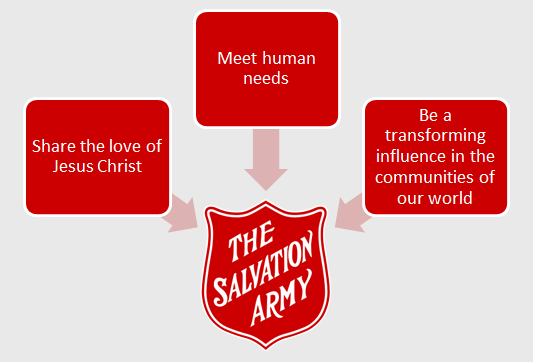Canadians living in poverty are increasingly vulnerable. Today, about 3.4 million Canadians, including over 622,000 children live in poverty. Many living in poverty often face a cycle of recidivism – where they move from crisis to crisis and remain vulnerable. Pathway of Hope focuses on identifying and addressing root cause issues for people living in poverty. It is a high impact strengths-based case management approach to providing targeted services to people with a desire to take action to break the cycle of crisis and vulnerability.

The Salvation Army Pathway of Hope (POH) is a holistic approach designed to support individuals as they take action to meet their aspirations and goals. Through their involvement clients will have opportunity to develop a network of support engage in programs and services and access community resources based on their action plan. Each client will begin working with a case planner to complete a comprehensive assessment and develop an action plan that includes steps to connect them with needed services. Through their active participation and follow up with these action steps clients will gain the most benefit from their involvement in POH.
For more information contact:
Richard Cunningham, Program Supervisor / POH Case Planner
The Salvation Army – Center of Hope
34081 Gladys Avenue, Abbotsford BC V2S 2E8
Phone-604-852-9305 ext. 131 | Cell 778-229-4727 | Fax-604-852-9305
Email: Richard.Cunningham@salvationarmy.ca
Or click on the button below to read more about the Pathway to Hope initiative.
Why This Approach?

Since its founding, The Salvation Army has served as a bridge within communities, providing care, hope, and belonging. Pathway of Hope supports the mission of The Salvation Army through the intentional integration of spiritual and religious care with casework services. The local team of officers, employees, volunteers, and corps members surround participants to collaboratively focus on the action plan created for each participant.
The Canada and Bermuda Territory’s vision for Pathway of Hope is to create a philosophical and cultural shift in our practice of providing service and support. Pathway of Hope fulfills an organizational desire to move beyond ‘serving’ toward approaches that focus on ‘solving’ and transformational change.
In addition, social sector funding is increasingly focused on results and evidence-based outcomes. The Salvation Army aims to be a high-impact organization and we must commit to evaluating the effectiveness of our work. Through the Pathway of Hope approach The Salvation Army can speak to the effectiveness of its community supports in a way that is data-supported.
Pathway of Hope’s Three Core Elements
Providing targeted services to people with a desire to take action, changing life trajectories and increasing hope
Through a committed relationship with the local Pathway of Hope team, built on trust and respect, an action plan is developed that includes personal aspirations and practical actions. The plan relies on assets and strengths recognizing participants can overcome barriers through a holistic approach that utilizes their inherent skills and abilities.
Bringing all the Army’s internal resources to bear, aligning them to the needs of participants, and focused on outcomes
Pathway of Hope drives a broader, renewed concept of the resources and relationships The Salvation Army can use to benefit participants. Reallocation of resources, greater operational efficiency, and increased organizational integration are key to ensuring participants receive the full benefit of assistance.
Catalyzing community collaboration in service of shared participants
The Salvation Army has a role to play in coordinating with external service providers to ensure participants have access to the services they need. Service to participants is bettered through enhanced community relationships, shared perspective among stakeholders, and coordinated operations and information.
